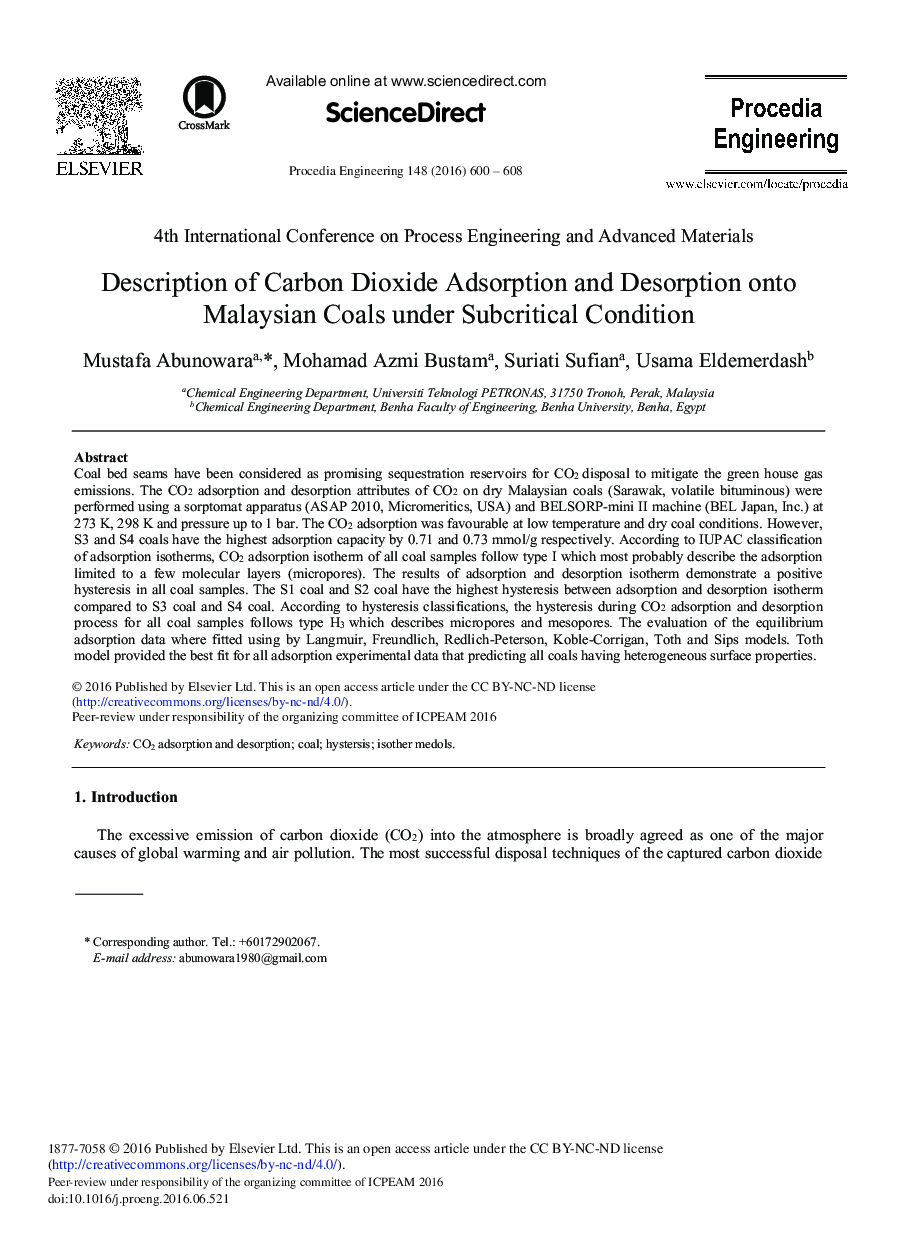| Article ID | Journal | Published Year | Pages | File Type |
|---|---|---|---|---|
| 853334 | Procedia Engineering | 2016 | 9 Pages |
Abstract
Coal bed seams have been considered as promising sequestration reservoirs for CO2 disposal to mitigate the green house gas emissions. The CO2 adsorption and desorption attributes of CO2 on dry Malaysian coals (Sarawak, volatile bituminous) were performed using a sorptomat apparatus (ASAP 2010, Micromeritics, USA) and BELSORP-mini II machine (BEL Japan, Inc.) at 273Â K, 298Â K and pressure up to 1Â bar. The CO2 adsorption was favourable at low temperature and dry coal conditions. However, S3 and S4 coals have the highest adsorption capacity by 0.71 and 0.73 mmol/g respectively. According to IUPAC classification of adsorption isotherms, CO2 adsorption isotherm of all coal samples follow type I which most probably describe the adsorption limited to a few molecular layers (micropores). The results of adsorption and desorption isotherm demonstrate a positive hysteresis in all coal samples. The S1 coal and S2 coal have the highest hysteresis between adsorption and desorption isotherm compared to S3 coal and S4 coal. According to hysteresis classifications, the hysteresis during CO2 adsorption and desorption process for all coal samples follows type H3 which describes micropores and mesopores. The evaluation of the equilibrium adsorption data where fitted using by Langmuir, Freundlich, Redlich-Peterson, Koble-Corrigan, Toth and Sips models. Toth model provided the best fit for all adsorption experimental data that predicting all coals having heterogeneous surface properties.
Keywords
Related Topics
Physical Sciences and Engineering
Engineering
Engineering (General)
Authors
Mustafa Abunowara, Mohamad Azmi Bustam, Suriati Sufian, Usama Eldemerdash,
